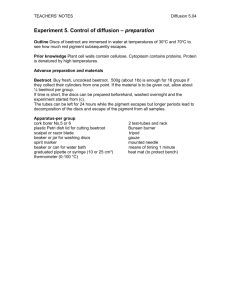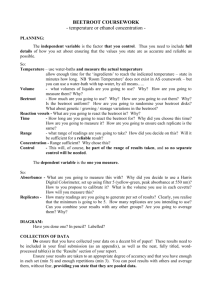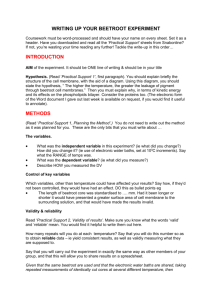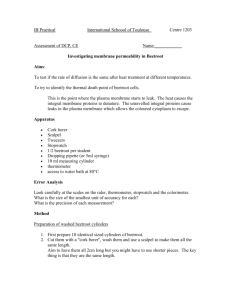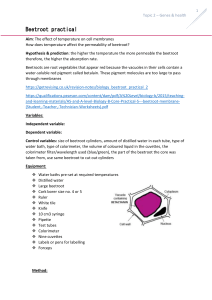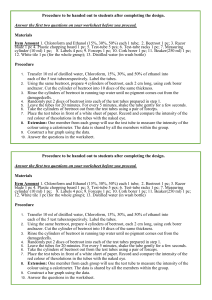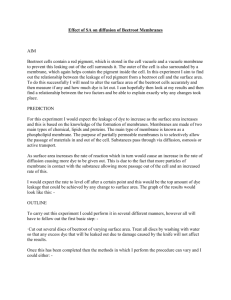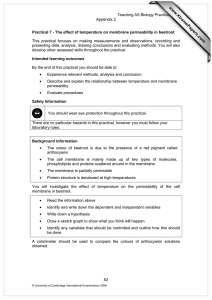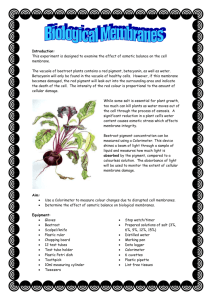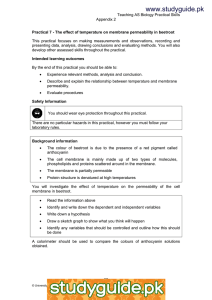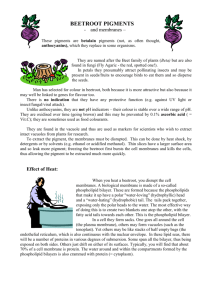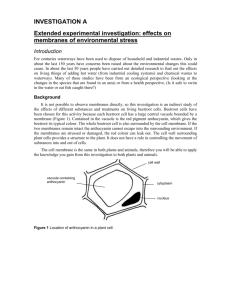Effect of temp on membranes
advertisement
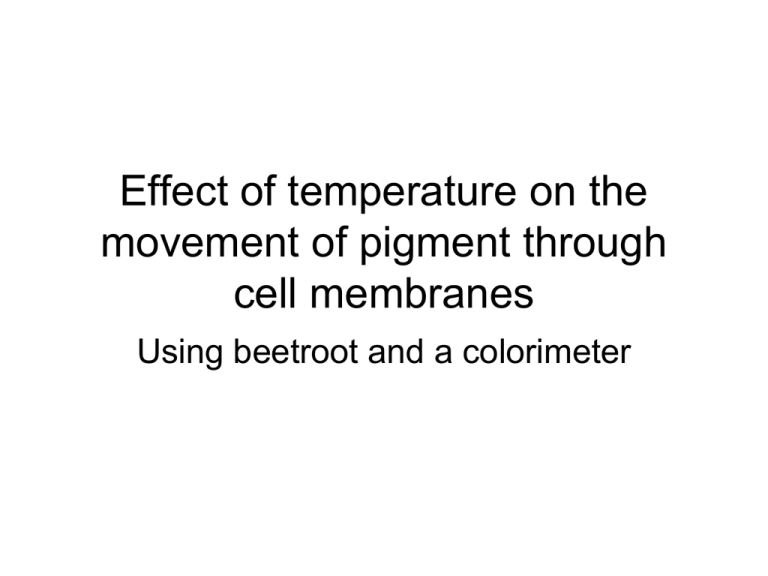
Effect of temperature on the movement of pigment through cell membranes Using beetroot and a colorimeter Introduction • In beetroot cells the red anthocyanin pigment occurs in the vacuoles. Each vacuole is surrounded by a tonoplast membrane and outside it, the cytoplasm is surrounded by the plasma membrane. • We can draw certain conclusions about these membranes by studying their properties. • In this practical we shall see how temperature affects the rate at which the anthocyanin pigment leaves the cells. Procedure • Heat 200 ml of distilled water to 85oC. • Whilst the water is heating, using a syringe place 10 ml of distilled water into each of ten tubes. Label the tubes 85, 80, 75, 70, 65, 63, 60, 55, 50 and 45. • Remove a cylinder of beetroot tissue using the narrow cork borer. • Cut a total of 10 beetroot cylinders each with a length of 3cm. Procedure continued • Place a beetroot cylinder in the beaker of water at 85oC for one minute. • After one minute remove with forceps and transfer to the test tube of cold water labelled 85oC. • As the distilled water in the beaker cools repeat the previous two steps, using a fresh cylinder each time, at the following temperatures 80oC, 75oC, 70oC, 65oC, 63oC, 60oC, 55oC, 50oC and 45oC. Procedure continued • Leave each cylinder in its test tube of cold water for exactly 30 minutes. • After 30 minutes, shake the test tube and remove the beetroot cylinder. At the end of the experiment you should have ten test tubes containing water which is stained red with anthocyanin pigment. • Using the colorimeter, compare the amounts of red pigment which have diffused out of the cylinders by measuring the absorbance of light of 4ml of the stained water placed in a cuvette. Design and Data Collection 1. Identify: (a) the dependent variable (b) the independent variable (c) the controlled variables in this investigation. 2. What would be the best way to record your raw (unprocessed) data? Record your data in this form. 3. What would be the best way to show estimated errors/uncertainties in your raw data. Include this with your recorded data. Data processing and presentation 1. First decide if there any way your data could be processed (changed) into a more useful or informative format? 2. Present your data in a suitable form (remember what the aim of the investigation is in deciding on the best presentation). 3. Show your estimated errors/uncertainties on your presented data. Conclusion and Evaluation 1. State a conclusion based upon interpretation of your data (include justification). 2. Evaluate weaknesses and limitations of the procedure. 3. Suggest realistic improvements in respect of identified weaknesses and limitations.
